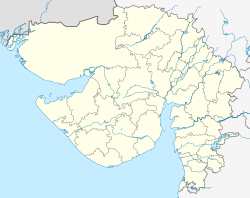This article needs to be updated.(July 2017) |
Chandkheda New chandkheda | |
|---|---|
Neighborhood | |
| Coordinates: 23°07′06″N72°35′12″E / 23.11842°N 72.586777°E | |
| Country | India |
| State | Gujarat |
| District | Ahmedabad |
| Government | |
| • Body | Ahmedabad Municipal Corporation |
| Area | |
• Total | 11 km2 (4.2 sq mi) |
| Elevation | 59 m (194 ft) |
| Population (2011) | |
• Total | 100,000 |
| • Density | 9,100/km2 (24,000/sq mi) |
| Languages | |
| • Official | Gujarati, Hindi |
| Time zone | UTC+5:30 (IST) |
| PIN | 382424 |
| Telephone code | 079-2329xxxx |
| Vehicle registration | GJ-1 |
Chandkheda is a well-developed area in northwestern Ahmedabad . It is situated on west of Sabarmati River.

